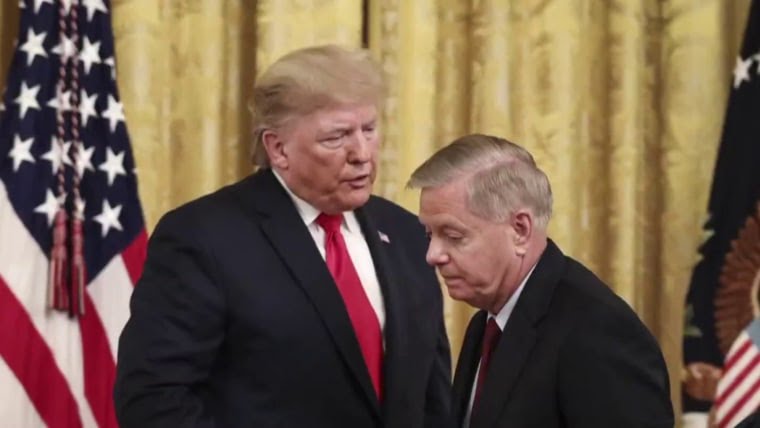The ongoing saga between former President Donald Trump and Senator Lindsey Graham has taken another contentious turn, this time revolving around the hot-button issue of abortion. Graham, a stalwart Republican from South Carolina, has found himself at odds with Trump over the latter’s reluctance to endorse a federal abortion ban. While this latest clash highlights their differences, it also presents opportunities for both men to bolster their political standing.
Graham’s criticism of Trump’s stance on abortion underscores the ideological divide within the Republican Party. As a longtime advocate for conservative values, Graham has consistently supported anti-abortion legislation and has urged Trump to take a stronger stance on the issue. However, Trump’s wavering position on abortion reflects his pragmatic approach to politics, as he seeks to maintain support from both conservative and moderate factions within the party.
For Graham, publicly challenging Trump on abortion serves multiple purposes. First, it reaffirms his commitment to conservative principles and positions him as a principled leader willing to challenge even the party’s most prominent figures. Second, it allows him to distinguish himself from Trump and assert his independence, which could be crucial as he navigates reelection campaigns and seeks to maintain his influence within the GOP.
On the other hand, Trump’s refusal to fully align with Graham’s stance on abortion is strategic in its own right. By maintaining a degree of flexibility on the issue, Trump can appeal to a broader base of supporters, including moderates who may be wary of strict anti-abortion measures. Additionally, Trump’s reluctance to toe the party line on certain issues reinforces his image as a maverick outsider who is not beholden to traditional political norms.
Moreover, the public clash over abortion could benefit both Trump and Graham in terms of energizing their respective bases. For Trump, it reinforces his reputation as a disruptor willing to challenge establishment figures within the party, which resonates with his loyal supporters. For Graham, it allows him to rally conservative voters by portraying himself as a steadfast defender of their values, even in the face of opposition from within his own party.
However, the friction between Trump and Graham also highlights the broader fissures within the Republican Party as it grapples with its post-Trump identity. While Trump continues to wield significant influence over the party, there is growing tension between his brand of populism and the more traditional conservatism espoused by figures like Graham. This tension may ultimately shape the direction of the party in the years to come, particularly as it seeks to appeal to a changing electorate.
In the end, while the abortion dispute may strain the relationship between Trump and Graham, it also presents opportunities for both men to solidify their political positions. Whether they can capitalize on these opportunities remains to be seen, but one thing is certain: the dynamic between Trump and Graham will continue to be a fascinating and consequential subplot in the ongoing drama of American politics.







Leave a Comment